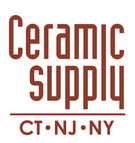Blair Meerfeld and The Art League School of Alexandria: Community of Inspiration

When Blair Meerfeld left a solitary Colorado life as a studio potter in 2009 to accept a position at a thriving East Coast art school, he had no idea how radically his life would change. As the Chair of the Ceramics Department at The Art League in Alexandria, Virginia, Meerfeld oversees over 1,400 students a year in a program that has continued to grow under his stewardship. In a position that he thought he would keep for a year or two before returning to his independent artist’s life, his days are filled with constant interaction with students, faculty and administration. Yet it was not until the COVID-19 pandemic shut down all operations at The Art League that Meerfeld was able to reflect on his experience and fully appreciate the importance of human interaction in the creative process.
Alexandria’s The Art League has a long history in the greater DC area of providing a wide range of instruction in the arts. Founded in 1954 as a charitable educational nonprofit organization, it provides the community with an arts nexus – a center of instruction, exhibitions, outreach, and an art supply store. Its program in Ceramics is its most utilized resource and is the only department with its own Chair. Meerfeld recalls his early days at the school, “It took me awhile to gettraction with the whole thing. After about five years, I finally realized we are one of the biggest in the country.” Today, the ceramics school employs nine instructors who teach 360 students in 18 classes each week. “We used to offer an associate program for resident potters,” Meerfeld says, “but we got so big, we just don’t have the space. It’s a luxury we can’t afford, and it saddens me a bit. But we do have 43 hours of open studio time each week.”
arts nexus – a center of instruction, exhibitions, outreach, and an art supply store. Its program in Ceramics is its most utilized resource and is the only department with its own Chair. Meerfeld recalls his early days at the school, “It took me awhile to gettraction with the whole thing. After about five years, I finally realized we are one of the biggest in the country.” Today, the ceramics school employs nine instructors who teach 360 students in 18 classes each week. “We used to offer an associate program for resident potters,” Meerfeld says, “but we got so big, we just don’t have the space. It’s a luxury we can’t afford, and it saddens me a bit. But we do have 43 hours of open studio time each week.”

Overseeing such a large operation would seem to leave little time or energy for Meerfeld’s creative work. “Someone is in your face – ‘What’s wrong with this pot?’ – every minute of the day. It’s bang, bang, bang – I have the answer. I thrive on that,” he says. Soon, he began to see that the constant exposure to others and their creative processes was what was missing in his solitary Colorado life. He explains, “It was idyllic. I was in this beautiful, remote space but I found that the inspiration came very slowly. I was bored!” At the school, the students are always trying things and he finds that he learns from them. Instead of hindering his creativity, the communal environment sparked it.
When the COVID-19 virus overtook life in March, The Art League closed its doors. “On March 13, we were teaching our largest class ever – 370 students,” Meerfeld rues. On March 14, the bustling studios and classrooms fell silent. Meerfeld changed the code on the keypad locks and stood guard, taking temperatures at the door while masked students dropped by to pick up their works in progress.
As Chair, Meerfeld began to make plans for an eventual reopening. The open studio space was sacrificed for extra classroom space, with only eight wheels in a room that had held 16 to 18. It looked like classes could resume in mid-July, but case numbers spiked. Again, a September 15 opening was recently canceled for the same reason. Meerfeld says, “We will open when we can but mostly, we will open when we should. We don’t want to open and have to close again. When we do open, we can offer as good an environment as anyone can in these circumstances.”




Meerfeld spent the early days of the pandemic checking on the facilities and answering occasional inquiries from students. He recalls, “After about a month and a half, I found myself very depressed. I am old enough and smart enough to figure it out. It was the same boredom I struggled with in Colorado. As soon as I figured it out, I was fine.” The Art League is a community school, in the full sense of community. Meerfeld had become part of that community. He says, “I am so close to all these people. When I opened for four days so that people could pick up their stuff, I’d ask them if they would come back. Many were suffering with their answers. Some were frustrated with us and others were too fearful to put themselves in this environment. All I could say was, ‘When we’re open, we hope we’ll see you.”
For now, Meerfeld waits. The reconfigured classrooms stand empty. He hopes to open in October, to welcome back the people who have become so integral in his artistic and personal life, armed with a pandemic-inspired deeper understanding of a life’s journey and its many sojourns along the way.
For more information about The Art League School, visit https://www.theartleague.org
